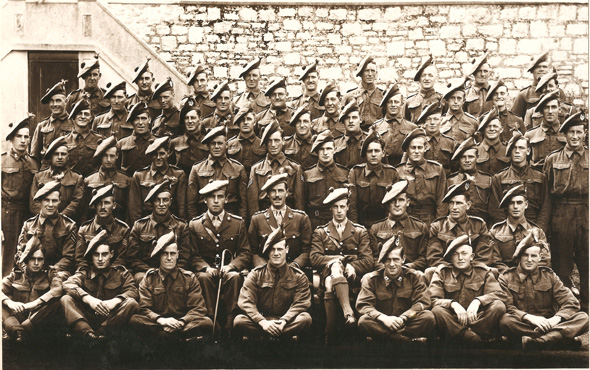Commandos in WW2
Primary tabs
Commando History
The first call for volunteers for ‘Service of a hazardous nature’ was in the early months of 1940 and for the new Independent Companies. Many of these men went onto action in Norway almost immediately with little training. On their return Winston Churchill wanted his own Corps of ‘shock troops’ to start afresh. Lt Col Dudley Clarke, who was then Military Assistant to the Chiefs of the Imperial General Staff, is generally credited with the initial outline plan of their formation. His plan was approved and the name agreed on. Thus the ‘Commandos’ were formed.
A majority of volunteers for the Independent Companies went onto join the newly raised Army Commandos. Further volunteers came from all sections of the Field Army.
In the Autumn of 1940 the Commandos and Independent Companies were organised into five Special Service Battalions under the command of a Special Service Brigade HQ. However these larger Battalions were felt too unwieldly and they were returned a few months later to their Commando designations.
A total of twelve Commando units were initially raised. It should be noted that at this time these early Commandos were all Army Commandos rather than Royal Marines.
It was not until February 1942 that the first Royal Marine Commando unit was raised. Initially designated as the 'Royal Marine Commando, Royal Marines', then, when a second RM Commando unit was formed in October, 'Royal Marine Commando (A), Royal Marines', and finally 'No.40 Royal Marine Commando, Royal Marines' [more....]. 40 and the later No.41RM Commando would be the only two RM Commando Units raised solely from volunteers as with their Army Commando counterparts.
Royal Naval Beach Commandos and Royal Air Force Servicing Commando Units were also raised, the former being unique in that R.N.B.C. unit designations were by letter of the alphabet rather than numerical.
In August 1943 a further six RM Commandos, Nos. 42 through to 47, were raised by the disbanding of certain battalions of the Royal Marines and redesignating them as Royal Marine Commando units. In March 1944 a need was seen for a further unit and No.48 RM Commando, Royal Marines, was raised. All went through the same rigorous Commando training as their Army counterparts. At the same time all the Army Commandos and RM Commandos were grouped together into four new Special Service Brigades. These four Brigades, each with their own command HQ, came under the auspices of a new HQ Special Services Group.
Nos. 1 and 4 Bdes operated in North West Europe; No. 2 Bde in Italy, Yugoslavia, and the Central Mediteranean area; and No. 3 Bde in Burma.
Towards the end of 1944 all four Special Service Brigades were redesignated as Commando Brigades.
At the end of the war, and without notice, a decision was made to disband the Army Commandos. Demobilization commenced almost immediately with some Commando Units being merged for short periods as numbers dwindled. The Commando role would now be for the Royal Marines.
Only three Commando units were initially retained, under the one Brigade, now designated as 3 Commando Brigade, Royal Marines.
Their Commando titles also changed from, for instance, No. 45 Royal Marine Commando, Royal Marines, to 45 Commando, Royal Marines.
Read more about post war Commando history. [go to post war history.]
These books about WW2 commando training detail every aspect of what it was like and are highly recommended.
Ask Questions / Add Information / Add Photos
Read some frequently asked questions here [FAQ's].



